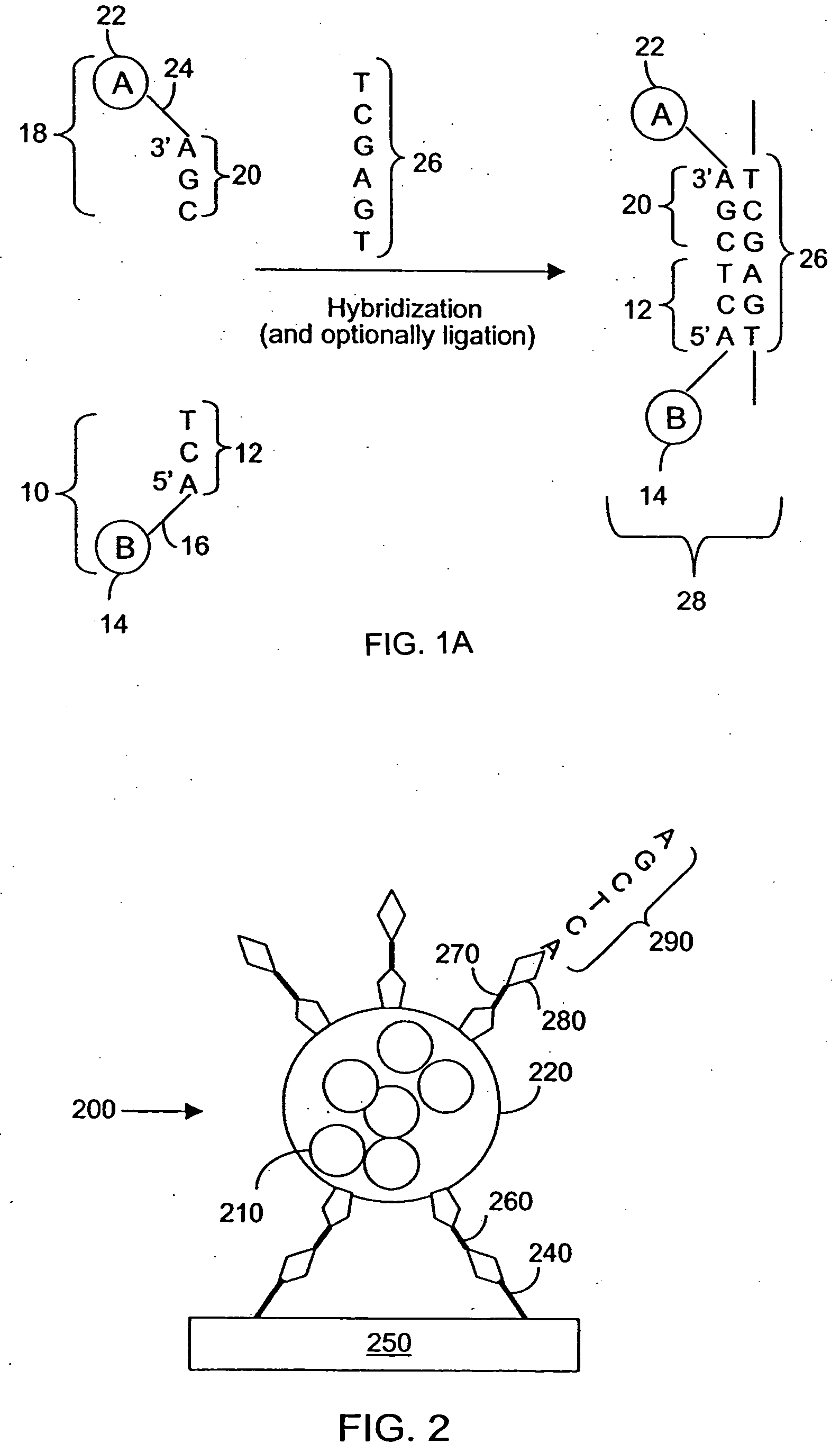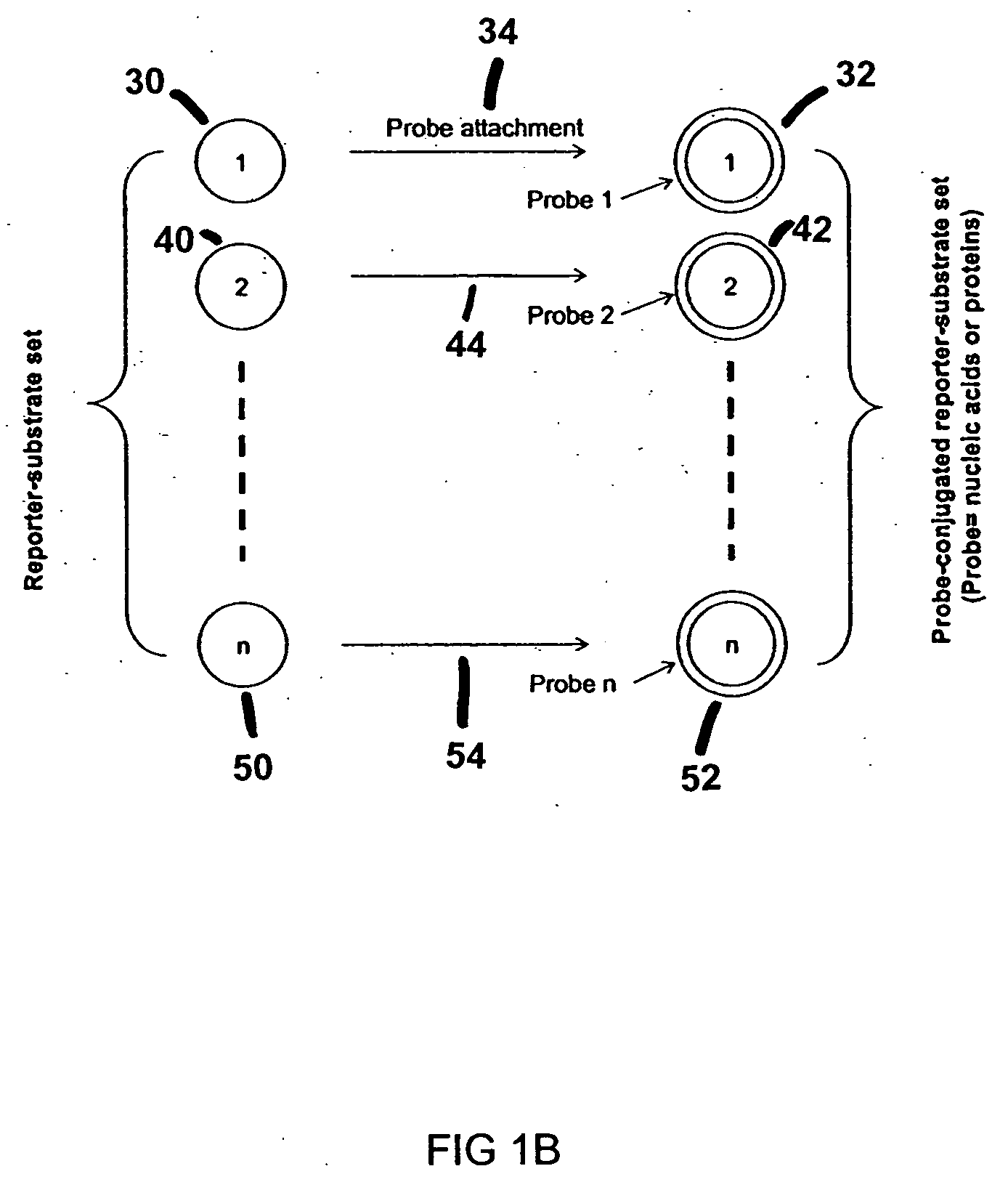Methods and apparatus for SERS assay of biological analytes
- Summary
- Abstract
- Description
- Claims
- Application Information
AI Technical Summary
Benefits of technology
Problems solved by technology
Method used
Image
Examples
example 1
[0155] Antibody-COIN conjugation: To conjugate COIN particles with antibodies, a direct adsorption method was used. A 500 μL solution containing 2 ng of a biotinylated anti-human IL-2 (anti-IL-2), or IL-8 antibody (anti-IL-8), in 1 mM Na3Citrate (pH 9) was mixed with 500 μL of a COIN solution (using 8-aza-adenine or N-benzoyl-adenine as the Raman label); the resulting solution was incubated at room temperature for 1 hour, followed by adding 100 μL of PEG-400 (polyethylene glycol 400). The solution was incubated at room temperature for another 30 min before a 200 μL of 1% Tween-20 was added. The resulting solution was centrifuged at 2000×g for 10 min. After removing the supernatant, the pellet was resuspended in 1 mL solution (BSAT) containing 0.5% BSA, 0.1% Tween-20 and 1 mM Na3Citrate. The solution was again centrifuged at 1000×g for 10 min to remove the supernatant. The BSAT washing procedure was repeated for a total of 3 times. The final pellet was resuspended in 700 μL of Diluti...
PUM
| Property | Measurement | Unit |
|---|---|---|
| diameter | aaaaa | aaaaa |
| sizes | aaaaa | aaaaa |
| size | aaaaa | aaaaa |
Abstract
Description
Claims
Application Information
 Login to View More
Login to View More - R&D
- Intellectual Property
- Life Sciences
- Materials
- Tech Scout
- Unparalleled Data Quality
- Higher Quality Content
- 60% Fewer Hallucinations
Browse by: Latest US Patents, China's latest patents, Technical Efficacy Thesaurus, Application Domain, Technology Topic, Popular Technical Reports.
© 2025 PatSnap. All rights reserved.Legal|Privacy policy|Modern Slavery Act Transparency Statement|Sitemap|About US| Contact US: help@patsnap.com



